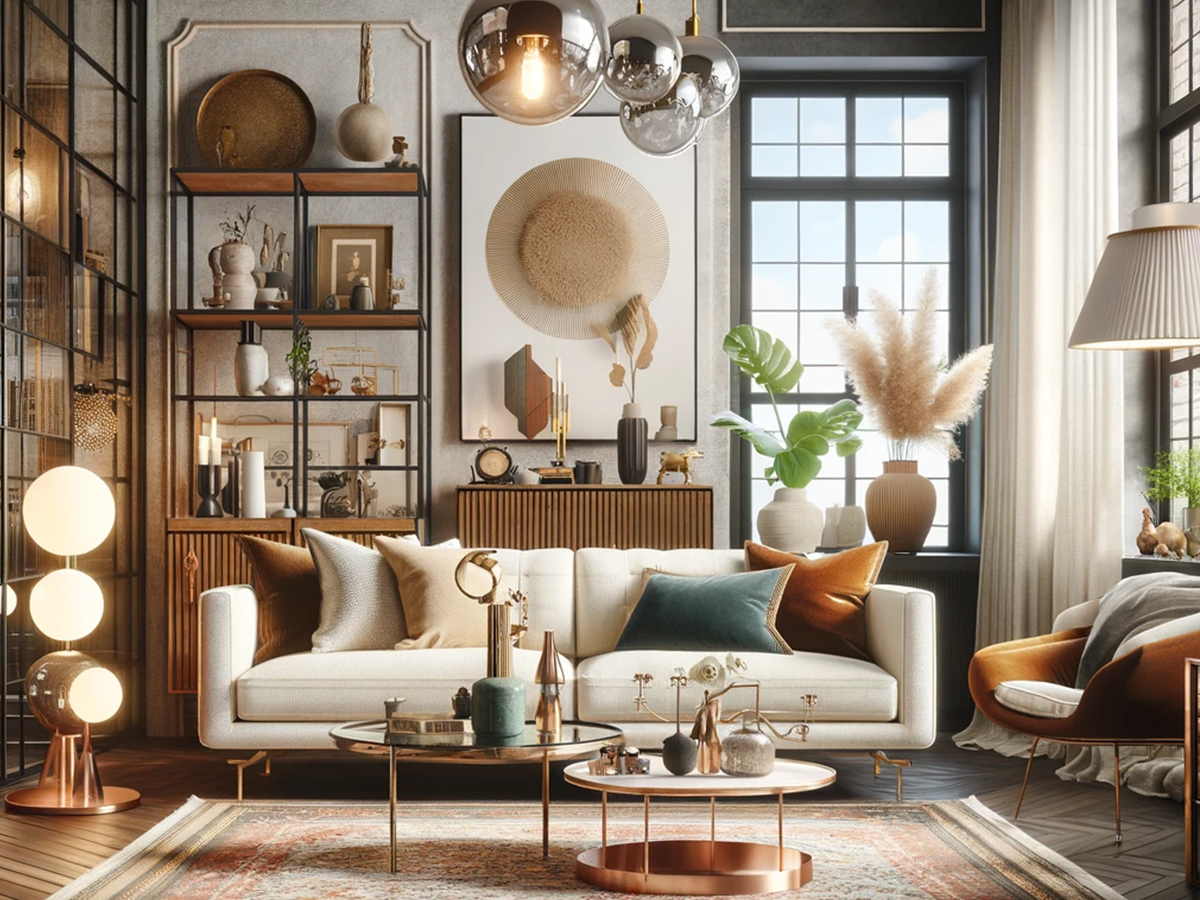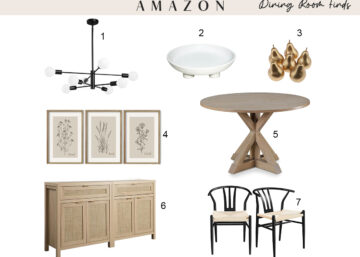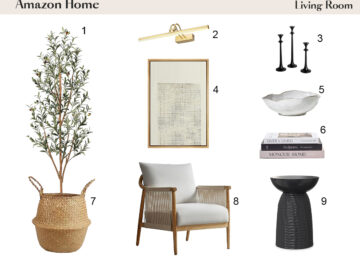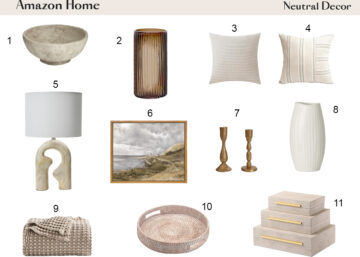Dynamic Duo: Combining Modern and Vintage Elements
The Appeal of Mixing Modern and Vintage
In the realm of interior design, the blend of modern and vintage elements is not merely a trend but a profound strategy to infuse spaces with character, history, and contemporary comfort. This approach creates environments that are both functional and aesthetically captivating, providing a unique narrative to every space.
Bridging Eras Through Design
The Timeless Dialogue
At the heart of mixing modern and vintage decor is the creation of a timeless dialogue between different eras. This fusion introduces a conversation within the space that reflects on the past while embracing the future. It’s a design strategy that pays homage to the craftsmanship and aesthetic appeal of vintage pieces, pairing them with the sleek lines and minimalist ethos of modern design. This juxtaposition highlights the unique beauty and functionality of items from disparate times, offering a layered and rich interior landscape.
Emotional Resonance and Sustainability
Integrating vintage elements into modern spaces does more than just beautify; it evokes a sense of nostalgia and brings an emotional depth to the design. Each vintage piece tells a story, be it through its craftsmanship, its origin, or the era it represents. This storytelling aspect creates a more engaging and personalized space. Moreover, repurposing vintage items is a nod to sustainability, reducing the need for new productions and highlighting the importance of reusing and cherishing historical pieces.
The Art of Balance
Harmonizing Contrasts
Achieving the perfect blend of modern and vintage requires a keen eye for balance. It’s about knowing how to harmonize contrasts so that each piece, whether sleek and contemporary or ornate and aged, complements the other. This balance ensures that the space feels cohesive and thoughtfully curated, rather than disjointed or cluttered.
Spatial Narratives
The strategic placement of vintage and modern elements within a space can create a dynamic narrative. For example, a contemporary sofa set against the backdrop of a vintage mural can make a bold statement, merging comfort with history. Similarly, modern lighting fixtures illuminating antique furniture pieces can highlight the intricate details of the past, bringing them into the present day. This narrative approach to design allows for spaces that are not only visually appealing but also rich in stories and meanings.
A Canvas for Personal Expression
The appeal of mixing modern and vintage elements lies in its ability to transform spaces into canvases for personal expression. It allows homeowners, designers, and architects to craft environments that reflect individual tastes, histories, and aspirations. By carefully selecting and integrating pieces from different eras, one can create spaces that are not just functional and beautiful but also deeply personal and environmentally conscious. This design philosophy encourages a deeper appreciation for the past and present, offering a new dimension to interior design that goes beyond aesthetics to touch on sustainability and personal storytelling.
Understanding Modern and Vintage Elements
To effectively blend modern and vintage styles, a comprehensive understanding of the characteristics and values that define each approach is crucial. This knowledge not only informs the selection process but also ensures that the fusion of these distinct elements results in a harmonious and intentional design.
Defining Modern Elements
Characteristics of Modern Design
Modern design, rooted in the modernism movement of the late 19th and early 20th centuries, champions simplicity, functionality, and minimalism. Its hallmark is the use of clean lines, neutral color palettes, and uncluttered spaces. Materials such as steel, glass, and concrete are often featured, reflecting an appreciation for industrial progress and technological innovation. Modern design emphasizes form following function, where every piece and space is designed with a clear purpose in mind, devoid of unnecessary ornamentation.
The Impact of Modern Design on Spaces
The incorporation of modern elements in interior design introduces a sense of clarity, spaciousness, and light. It creates an environment that feels open and tranquil, where the absence of clutter allows for a focus on the architecture and carefully chosen furnishings. Modern design’s affinity for open floor plans and large windows enhances the connection between the interior and exterior, promoting a seamless flow that brings natural light and outdoor beauty into the living spaces.
Defining Vintage Elements
Characteristics of Vintage Design
Vintage design encompasses a wide range of periods and styles, generally referring to anything from the past 20 to 100 years that exemplifies the distinctive characteristics of its time. Unlike antiques, which are over 100 years old, vintage items capture the essence of their era, whether it’s the ornate detail of the Victorian age, the bold patterns of the mid-century modern period, or the eclectic vibrancy of the 1970s. Vintage design values craftsmanship, history, and the story behind each piece, often featuring intricate designs, rich textures, and warm, inviting colors.
The Emotional Connection to Vintage Elements
Integrating vintage elements into a space introduces a layer of depth and personality. These pieces often carry a sense of history and nostalgia, evoking memories and emotions that connect the occupants to different times and places. Vintage items can serve as conversation starters, their unique backgrounds and origins adding intrigue and warmth to the home. The presence of vintage elements can transform a house into a home, infusing it with character and a sense of lived-in comfort that new items cannot replicate.
The Synergy of Modern and Vintage
Creating a Cohesive Aesthetic
The key to blending modern and vintage elements lies in finding a cohesive thread that ties the space together. This could be a consistent color scheme, a particular material, or a recurring design motif. By identifying a unifying element, designers can mix pieces from different eras without the space feeling disjointed or chaotic. For instance, a modern, minimalist room can be warmed up with a vintage wood credenza or an antique rug, adding texture and history while maintaining a clean, contemporary look.
Balancing Proportions and Textures
Achieving harmony between modern and vintage also involves careful consideration of proportions and textures. A large, modern sofa can be balanced with smaller vintage side tables, or a sleek, contemporary lamp can illuminate an ornate antique desk. Mixing smooth, polished surfaces with worn, textured ones adds visual interest and tactile diversity, enriching the sensory experience of the space.
Planning Your Space
When embarking on the journey of blending modern and vintage elements within a space, strategic planning becomes paramount. This process involves more than just selecting pieces that appeal to your taste; it requires a thoughtful consideration of the space’s functionality, the interplay of different design elements, and the overall atmosphere you wish to create. For architects, interior designers, real estate developers, homeowners, and commercial business owners alike, the planning stage is critical in ensuring that the final design not only looks cohesive but also serves the intended purpose of the space effectively.
Establishing a Design Vision
Identifying Your Aesthetic Goals
The first step in planning your space is to clearly define your aesthetic and functional goals. Consider the mood and atmosphere you aim to create. Do you envision a serene and minimalist retreat or a warm and inviting space filled with character and stories? Understanding your desired outcome will guide your selection of both modern and vintage elements, ensuring they contribute to the overarching design vision.
Functional Requirements and Space Utilization
Beyond aesthetics, consider the functional requirements of your space. How will the area be used, and what are the needs of those who will use it? This could involve contemplating the flow between rooms, the need for private versus open spaces, or the integration of technology within a vintage setting. Tailoring the design to meet these functional needs ensures that the space is not only beautiful but also livable and practical.
Selecting and Sourcing Elements
Curating Modern and Vintage Pieces
With a clear vision in place, the selection and sourcing of modern and vintage pieces can begin. This involves a careful balance of aesthetics, condition, and authenticity. For vintage items, consider their history, craftsmanship, and how they might tell a story within your space. For modern elements, focus on clean lines, functionality, and how they complement the vintage pieces. The goal is to curate a collection of items that, when brought together, create a harmonious blend of old and new.
Customization and Personalization
Consider customization and personalization options to ensure that both modern and vintage elements fit seamlessly within your space. This might involve refinishing vintage pieces to match a modern color palette or customizing new pieces to reflect a vintage aesthetic. Personalizing your space in this way not only enhances the uniqueness of the design but also ensures that it reflects your personal style and meets your functional needs.
Integrating Technology and Modern Amenities
Harmonizing Function with Aesthetics
In today’s world, integrating modern technology and amenities into your space is essential, even when pursuing a vintage aesthetic. The challenge lies in doing so without disrupting the design narrative. Strategic placement, hidden storage solutions, or choosing technology with a design that nods to the vintage can maintain aesthetic cohesion while ensuring the space meets contemporary standards of comfort and convenience.
Spatial Planning and Layout
Creating a Cohesive Flow
The layout of your space is crucial in achieving a balance between modern and vintage elements. Consider the placement of large furniture pieces, the flow of movement through the space, and how different zones interact with each other. The goal is to create a cohesive flow that allows each piece to stand out while contributing to the overall design theme.
Practical Tips for Blending Modern and Vintage
Merging modern and vintage elements in interior design is an art form that, when done well, can transform ordinary spaces into extraordinary ones. It’s a nuanced process that requires a keen eye for detail, a deep understanding of design principles, and a boldness to experiment. For architects, interior designers, real estate developers, homeowners, and commercial business owners, blending these styles can elevate the aesthetic appeal of a space, making it more inviting, dynamic, and reflective of personal or brand identity. Here are some practical tips for achieving a harmonious blend that’s both innovative and timeless.
Start with a Neutral Palette
Foundation for Flexibility
Beginning with a neutral palette for walls and large furniture pieces establishes a versatile foundation that allows vintage and modern elements to coexist without competition. Neutral colors such as whites, beiges, grays, and soft pastels provide a backdrop that accentuates the beauty and uniqueness of both modern and vintage items. This flexibility enables designers and homeowners to switch out or add pieces over time without having to rethink the entire space.
Focus on Statement Pieces
Anchoring Spaces with Character
Selecting a few statement pieces — whether modern or vintage — can serve as focal points around which the rest of the room is designed. A vintage chandelier in a contemporary dining room or a modern sculptural piece in a traditionally styled living room can draw the eye and set the tone for the space. These pieces not only anchor the room but also bridge the gap between different design eras, creating a dialogue between the old and the new.
Mix Textures and Materials
Depth Through Diversity
Incorporating a variety of textures and materials is a subtle yet powerful way to blend modern and vintage aesthetics. The juxtaposition of rough, aged wood against smooth, polished metal, or the combination of plush vintage fabrics with modern synthetic materials, adds depth and interest to the space. This approach encourages a tactile experience, inviting occupants to touch, explore, and connect with the design elements on a deeper level.
Curate with Care
Intentionality in Selection
Every piece in a blended space should feel intentional, as if it has earned its place within the design. This means being selective and purposeful in sourcing items, whether scouring antique markets for vintage finds or choosing modern pieces that reflect cutting-edge design trends. The key is to curate items that speak to you personally or resonate with the brand identity you wish to convey, ensuring that each piece contributes to the narrative of the space.
Balance Scale and Proportion
Harmonizing Elements
Understanding and respecting the scale and proportion of both modern and vintage pieces is crucial in creating a balanced space. Large, bulky furniture can overwhelm a room, making it feel cramped and disjointed, while too many small items can create a cluttered look. Strive for balance, mixing large statement pieces with smaller, intricate items to maintain a sense of harmony and flow within the space.
Let Lighting Lead
Illuminating Design
Lighting plays a pivotal role in uniting modern and vintage elements. The strategic use of lighting can highlight architectural features, draw attention to key pieces, and set the mood of the room. Consider mixing modern LED lighting with vintage lamps or fixtures to create a warm, inviting atmosphere that enhances the blend of styles.
Personalize with Accessories
Final Touches That Tell a Story
Accessories and decor items are the final layers that bring a space to life, offering opportunities to infuse personality and history into the design. Mixing modern art with vintage frames, or contemporary vases with antique books, allows for personal expression and storytelling within the space. These touches not only add visual interest but also create a sense of belonging and identity.
Conclusion
Embracing the Blend
The journey of blending modern and vintage elements in interior design is a testament to the dynamic and evolving nature of our aesthetic preferences and personal stories. This approach not only challenges us to think creatively about the spaces we inhabit but also offers a unique opportunity to craft environments that reflect a deep sense of identity, history, and innovation.
A Future Built on Foundations of the Past
By embracing the blend of modern and vintage, we invite our clients—architects, interior designers, real estate developers, homeowners, and commercial business owners—to explore the limitless possibilities of their spaces. This philosophy is not just about achieving a certain look but about creating environments that resonate on a personal level, enriching the lives of those who inhabit them.
Crafting Timeless Spaces
As we move forward, the art of blending modern and vintage elements stands as a pillar of our design approach at Elemental Viz. It is a method that celebrates diversity, encourages sustainability, and fosters creativity, allowing us to craft spaces that are not only visually stunning but also timeless in their appeal. This journey of discovery and innovation is one we are proud to share with our clients, as we continue to explore new horizons in interior design and architectural visualization.








